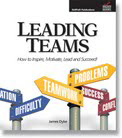Talk with the warring parties separately before bringing them to the table.
This advice comes from Lee Price, a consultant and contributor at Monster.com: Talk with the warring parties separately before bringing them to the table.

She cautions leaders, “Not every little squabble requires you to get involved. For everyday friction that occurs at work, give people space to disagree and work things out.” But that changes if a disagreement becomes personal or begins to affect the work. That’s when it’s time for you to step in and intervene.
The bad news is that conflict in the workplace is all too common.
The good news is that conflict isn’t necessarily a bad thing.
Amy Gallo, author of the HBR Guide to Managing Conflict at Work, says“The fact that people disagree isn’t a bad thing. It’s how we manage conflict that can be damaging to productivity.”
The irony is, if you handle conflict well, you actually increase trust among team members, and create stronger bonds of loyalty and mutual support! The tricky part is handling conflict in a constructive way. [NOTE: If you haven’t read it already, start with the blog from November 29, 2020—it will be a good primer before you jump into this post!]
Follow these tips to help your direct reports mend their fences and move forward more constructively.
Give Each Party Your Time and Attention

The first step to finding peace: “Talk to both parties separately,” says Lindred Greer, an assistant professor of organizational behavior at Stanford University Graduate School of Business.
Start with one-on-one conversations, and help each person tackle the most important parts of resolving the conflict:
- Clarifying their own point-of-view
- Understanding their own emotions—what they are feeling as a result of the conflict
- Seeing the situation from the other person’s point-of-view
- Anticipating what the other person might be thinking and feeling
- Thinking ahead about what they want to say to the other person
Your job is two-fold: First, to make sure you have a clear understanding of the situation—including each person’s perspective; second, to make sure that each person feels heard! Sometimes, conflict erupts because people don’t feel they are being listened to! As a result, they also often feel disrespected, disenfranchised, or even marginalized.
Amy Gallo says simply, “Just making someone feel heard can help.”
Explore Difficult Feelings with Careful Questions
People sometimes find it difficult to put into words exactly what they are thinking and feeling—especially when the situation is surfacing upset or anger! We have learned, for example, that anger is a “covering” emotion that we experience when our true, deeper emotions are too difficult or too uncomfortable to face. So…be prepared to guide the process of introspection with careful “feeling” questions that help each person more clearly identify the emotional issues involved.
For example… are they feeling angry, or are they feeling…
- Disrespected, dismissed, or devalued?
- Ignored, rejected, or shunned?
- Guilty or regretful?
- Ashamed or embarrassed?
- Helpless, vulnerable, or scared?
- Betrayed, let down, or disappointed?
- Abandoned or isolated?
- Losses of some kind … e.g. possessions, relationships, status?
- Taken advantage of … taken for granted … or unappreciated?
- Treated unfairly?
Use Open-ended Questions to Help Each Party Explore One Another’s Point-of-View

One of the most helpful tactics in conflict resolution is shared understanding—when the parties involved are able to gain insight into each other’s point-of-view. This process is more easily accomplished with questions designed to gently guide each person’s exploration of empathy:
- What do you guess she is thinking?
- How might he be feeling about this?
- What do you think is making her so upset?
- How might you feel, if you were in his shoes right now?
- What else might be going on with her in this situation?
The goal here is to foster mutual understanding, by helping each party to consider other frames of reference and alternate viewpoints.
Help Them See How to Succeed
Now your goal is to help each party see that they have the power to resolve the conflict in a constructive way. Like many coaching issues, this is a combination of gentle guidance and strong positive support. You can do this with more leading questions:
- What do you think you could do to make this situation better?
- How might you approach the other person with your concerns?
- What do you think would help create better understanding between you two?
- What do you think would help to resolve this?
By asking the right questions, you’re helping each person understand their own strong feelings; see the other party’s perspective; and identify constructive steps they can take to address the situation.
Get Them Working TOGETHER

Now encourage the two parties to meet privately and share some of the helpful information they have conveyed to you separately. Impress on them your confidence in their ability to work out their differences and resolve their issues on their own. Step back and let them handle the situation. Avoid being drawn into this process as a mediator, unless they specifically ask you to be there.
Impress on each person the importance of the team vision; the team’s success; and how team success is different than individual success—even (arguably) more important and sometimes deserving of individual sacrifice or deference! Help the two parties to see how to stay focused on the work of team going forward—to work together collaboratively instead of competitively.
How about YOU?? If you have found the content in this blog helpful, keep in touch; keep reading; keep learning; and keep getting better as a leader!
Until next time… Yours for better leaders and better organizations,
Dr. Jim Dyke – “The Boss Doctor” ™ helping you to BE a better boss and to HAVE a better boss!


